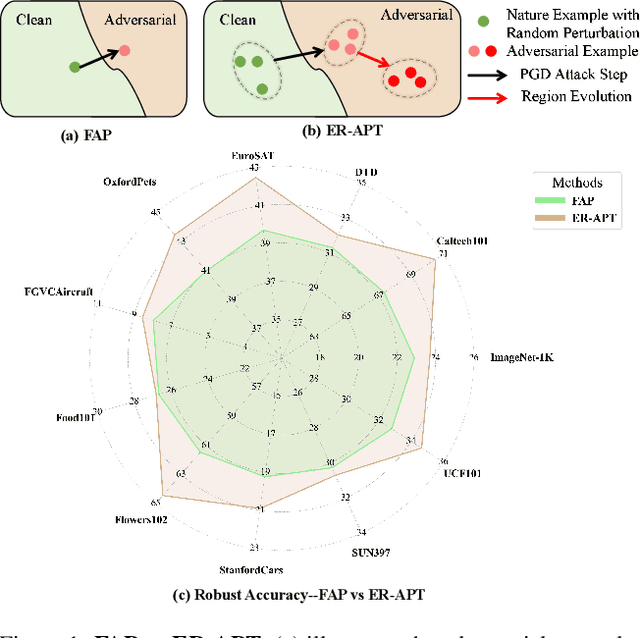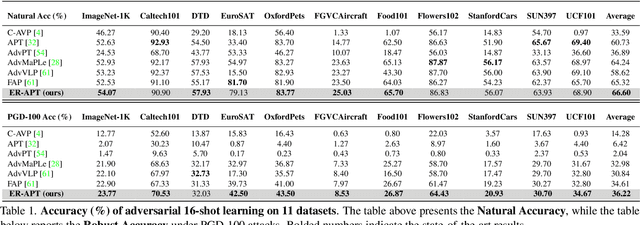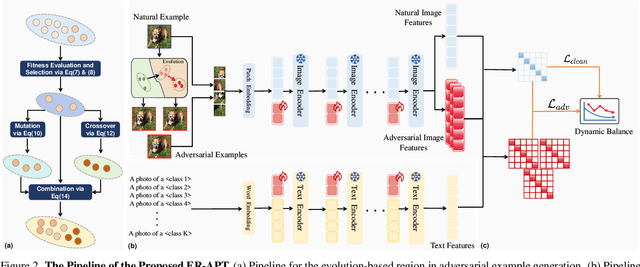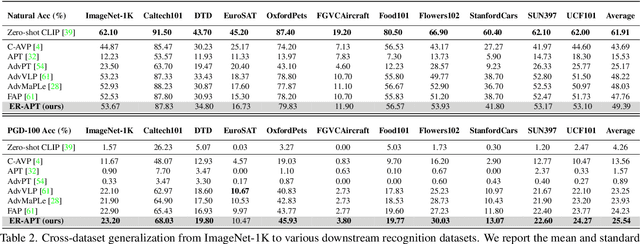Simeng Qin
PhysPatch: A Physically Realizable and Transferable Adversarial Patch Attack for Multimodal Large Language Models-based Autonomous Driving Systems
Aug 07, 2025Abstract:Multimodal Large Language Models (MLLMs) are becoming integral to autonomous driving (AD) systems due to their strong vision-language reasoning capabilities. However, MLLMs are vulnerable to adversarial attacks, particularly adversarial patch attacks, which can pose serious threats in real-world scenarios. Existing patch-based attack methods are primarily designed for object detection models and perform poorly when transferred to MLLM-based systems due to the latter's complex architectures and reasoning abilities. To address these limitations, we propose PhysPatch, a physically realizable and transferable adversarial patch framework tailored for MLLM-based AD systems. PhysPatch jointly optimizes patch location, shape, and content to enhance attack effectiveness and real-world applicability. It introduces a semantic-based mask initialization strategy for realistic placement, an SVD-based local alignment loss with patch-guided crop-resize to improve transferability, and a potential field-based mask refinement method. Extensive experiments across open-source, commercial, and reasoning-capable MLLMs demonstrate that PhysPatch significantly outperforms prior methods in steering MLLM-based AD systems toward target-aligned perception and planning outputs. Moreover, PhysPatch consistently places adversarial patches in physically feasible regions of AD scenes, ensuring strong real-world applicability and deployability.
Adversarial Attacks against Closed-Source MLLMs via Feature Optimal Alignment
May 27, 2025Abstract:Multimodal large language models (MLLMs) remain vulnerable to transferable adversarial examples. While existing methods typically achieve targeted attacks by aligning global features-such as CLIP's [CLS] token-between adversarial and target samples, they often overlook the rich local information encoded in patch tokens. This leads to suboptimal alignment and limited transferability, particularly for closed-source models. To address this limitation, we propose a targeted transferable adversarial attack method based on feature optimal alignment, called FOA-Attack, to improve adversarial transfer capability. Specifically, at the global level, we introduce a global feature loss based on cosine similarity to align the coarse-grained features of adversarial samples with those of target samples. At the local level, given the rich local representations within Transformers, we leverage clustering techniques to extract compact local patterns to alleviate redundant local features. We then formulate local feature alignment between adversarial and target samples as an optimal transport (OT) problem and propose a local clustering optimal transport loss to refine fine-grained feature alignment. Additionally, we propose a dynamic ensemble model weighting strategy to adaptively balance the influence of multiple models during adversarial example generation, thereby further improving transferability. Extensive experiments across various models demonstrate the superiority of the proposed method, outperforming state-of-the-art methods, especially in transferring to closed-source MLLMs. The code is released at https://github.com/jiaxiaojunQAQ/FOA-Attack.
The Eye of Sherlock Holmes: Uncovering User Private Attribute Profiling via Vision-Language Model Agentic Framework
May 25, 2025Abstract:Our research reveals a new privacy risk associated with the vision-language model (VLM) agentic framework: the ability to infer sensitive attributes (e.g., age and health information) and even abstract ones (e.g., personality and social traits) from a set of personal images, which we term "image private attribute profiling." This threat is particularly severe given that modern apps can easily access users' photo albums, and inference from image sets enables models to exploit inter-image relations for more sophisticated profiling. However, two main challenges hinder our understanding of how well VLMs can profile an individual from a few personal photos: (1) the lack of benchmark datasets with multi-image annotations for private attributes, and (2) the limited ability of current multimodal large language models (MLLMs) to infer abstract attributes from large image collections. In this work, we construct PAPI, the largest dataset for studying private attribute profiling in personal images, comprising 2,510 images from 251 individuals with 3,012 annotated privacy attributes. We also propose HolmesEye, a hybrid agentic framework that combines VLMs and LLMs to enhance privacy inference. HolmesEye uses VLMs to extract both intra-image and inter-image information and LLMs to guide the inference process as well as consolidate the results through forensic analysis, overcoming existing limitations in long-context visual reasoning. Experiments reveal that HolmesEye achieves a 10.8% improvement in average accuracy over state-of-the-art baselines and surpasses human-level performance by 15.0% in predicting abstract attributes. This work highlights the urgency of addressing privacy risks in image-based profiling and offers both a new dataset and an advanced framework to guide future research in this area.
Evolution-based Region Adversarial Prompt Learning for Robustness Enhancement in Vision-Language Models
Mar 17, 2025



Abstract:Large pre-trained vision-language models (VLMs), such as CLIP, demonstrate impressive generalization but remain highly vulnerable to adversarial examples (AEs). Previous work has explored robust text prompts through adversarial training, achieving some improvement in both robustness and generalization. However, they primarily rely on singlegradient direction perturbations (e.g., PGD) to generate AEs, which lack diversity, resulting in limited improvement in adversarial robustness. To address these limitations, we propose an evolution-based region adversarial prompt tuning method called ER-APT, which combines gradient methods with genetic evolution to generate more diverse and challenging AEs. In each training iteration, we first generate AEs using traditional gradient-based methods. Subsequently, a genetic evolution mechanism incorporating selection, mutation, and crossover is applied to optimize the AEs, ensuring a broader and more aggressive perturbation distribution.The final evolved AEs are used for prompt tuning, achieving region-based adversarial optimization instead of conventional single-point adversarial prompt tuning. We also propose a dynamic loss weighting method to adjust prompt learning efficiency for accuracy and robustness. Experimental evaluations on various benchmark datasets demonstrate the superiority of our proposed method, outperforming stateof-the-art APT methods. The code is released at https://github.com/jiaxiaojunQAQ/ER-APT.
Semantic-Aligned Adversarial Evolution Triangle for High-Transferability Vision-Language Attack
Nov 04, 2024



Abstract:Vision-language pre-training (VLP) models excel at interpreting both images and text but remain vulnerable to multimodal adversarial examples (AEs). Advancing the generation of transferable AEs, which succeed across unseen models, is key to developing more robust and practical VLP models. Previous approaches augment image-text pairs to enhance diversity within the adversarial example generation process, aiming to improve transferability by expanding the contrast space of image-text features. However, these methods focus solely on diversity around the current AEs, yielding limited gains in transferability. To address this issue, we propose to increase the diversity of AEs by leveraging the intersection regions along the adversarial trajectory during optimization. Specifically, we propose sampling from adversarial evolution triangles composed of clean, historical, and current adversarial examples to enhance adversarial diversity. We provide a theoretical analysis to demonstrate the effectiveness of the proposed adversarial evolution triangle. Moreover, we find that redundant inactive dimensions can dominate similarity calculations, distorting feature matching and making AEs model-dependent with reduced transferability. Hence, we propose to generate AEs in the semantic image-text feature contrast space, which can project the original feature space into a semantic corpus subspace. The proposed semantic-aligned subspace can reduce the image feature redundancy, thereby improving adversarial transferability. Extensive experiments across different datasets and models demonstrate that the proposed method can effectively improve adversarial transferability and outperform state-of-the-art adversarial attack methods. The code is released at https://github.com/jiaxiaojunQAQ/SA-AET.
TranSegPGD: Improving Transferability of Adversarial Examples on Semantic Segmentation
Dec 03, 2023



Abstract:Transferability of adversarial examples on image classification has been systematically explored, which generates adversarial examples in black-box mode. However, the transferability of adversarial examples on semantic segmentation has been largely overlooked. In this paper, we propose an effective two-stage adversarial attack strategy to improve the transferability of adversarial examples on semantic segmentation, dubbed TranSegPGD. Specifically, at the first stage, every pixel in an input image is divided into different branches based on its adversarial property. Different branches are assigned different weights for optimization to improve the adversarial performance of all pixels.We assign high weights to the loss of the hard-to-attack pixels to misclassify all pixels. At the second stage, the pixels are divided into different branches based on their transferable property which is dependent on Kullback-Leibler divergence. Different branches are assigned different weights for optimization to improve the transferability of the adversarial examples. We assign high weights to the loss of the high-transferability pixels to improve the transferability of adversarial examples. Extensive experiments with various segmentation models are conducted on PASCAL VOC 2012 and Cityscapes datasets to demonstrate the effectiveness of the proposed method. The proposed adversarial attack method can achieve state-of-the-art performance.
 Add to Chrome
Add to Chrome Add to Firefox
Add to Firefox Add to Edge
Add to Edge